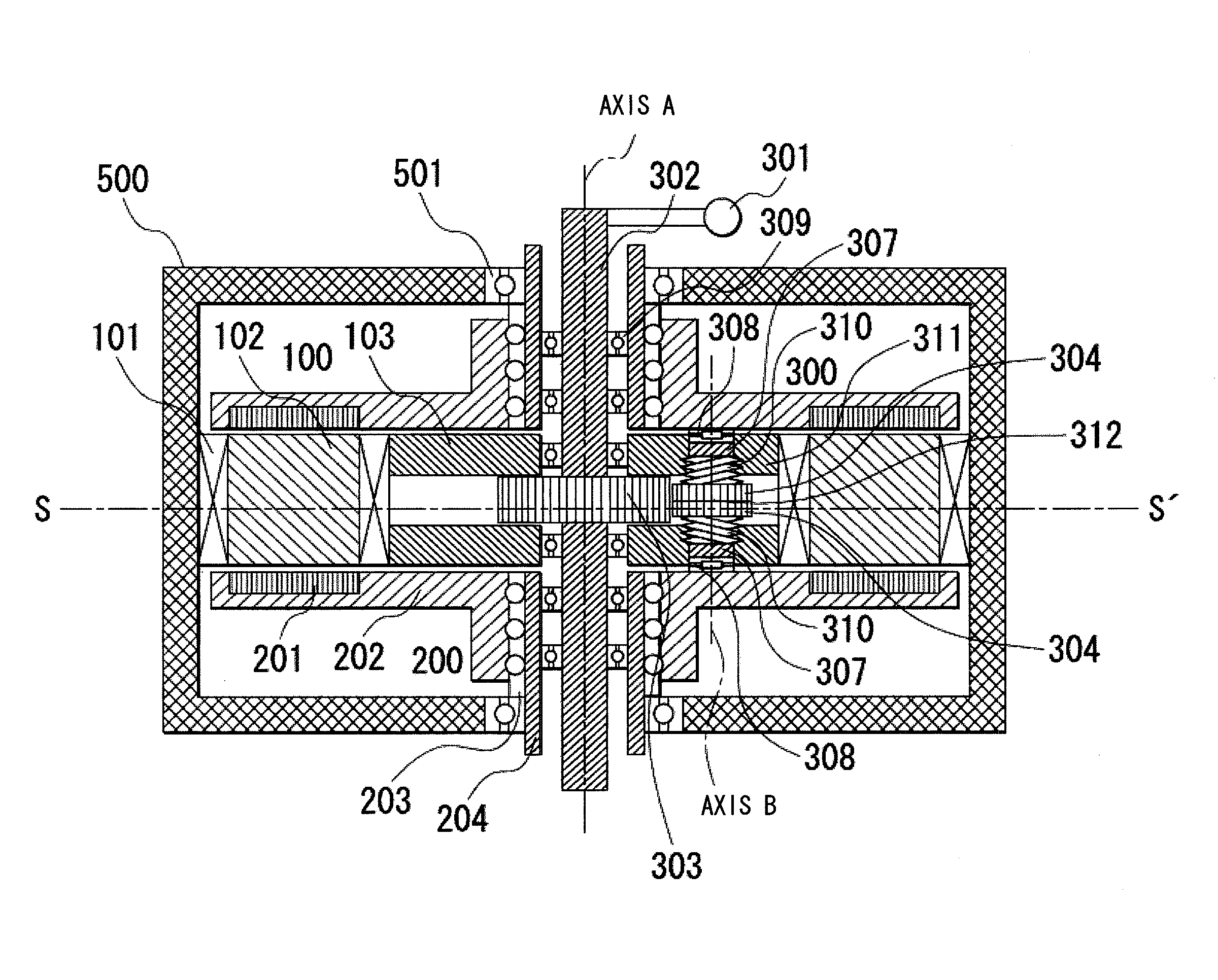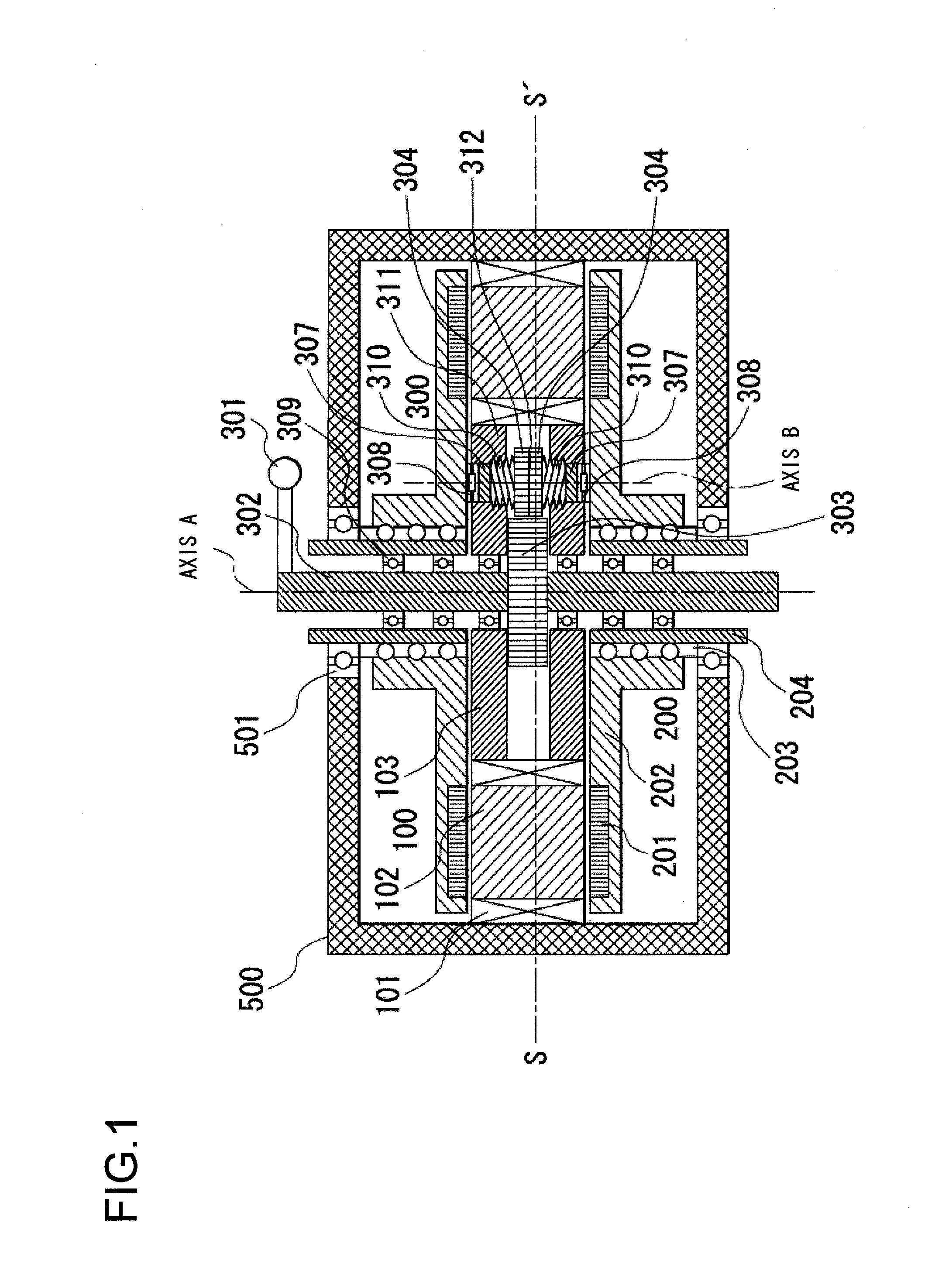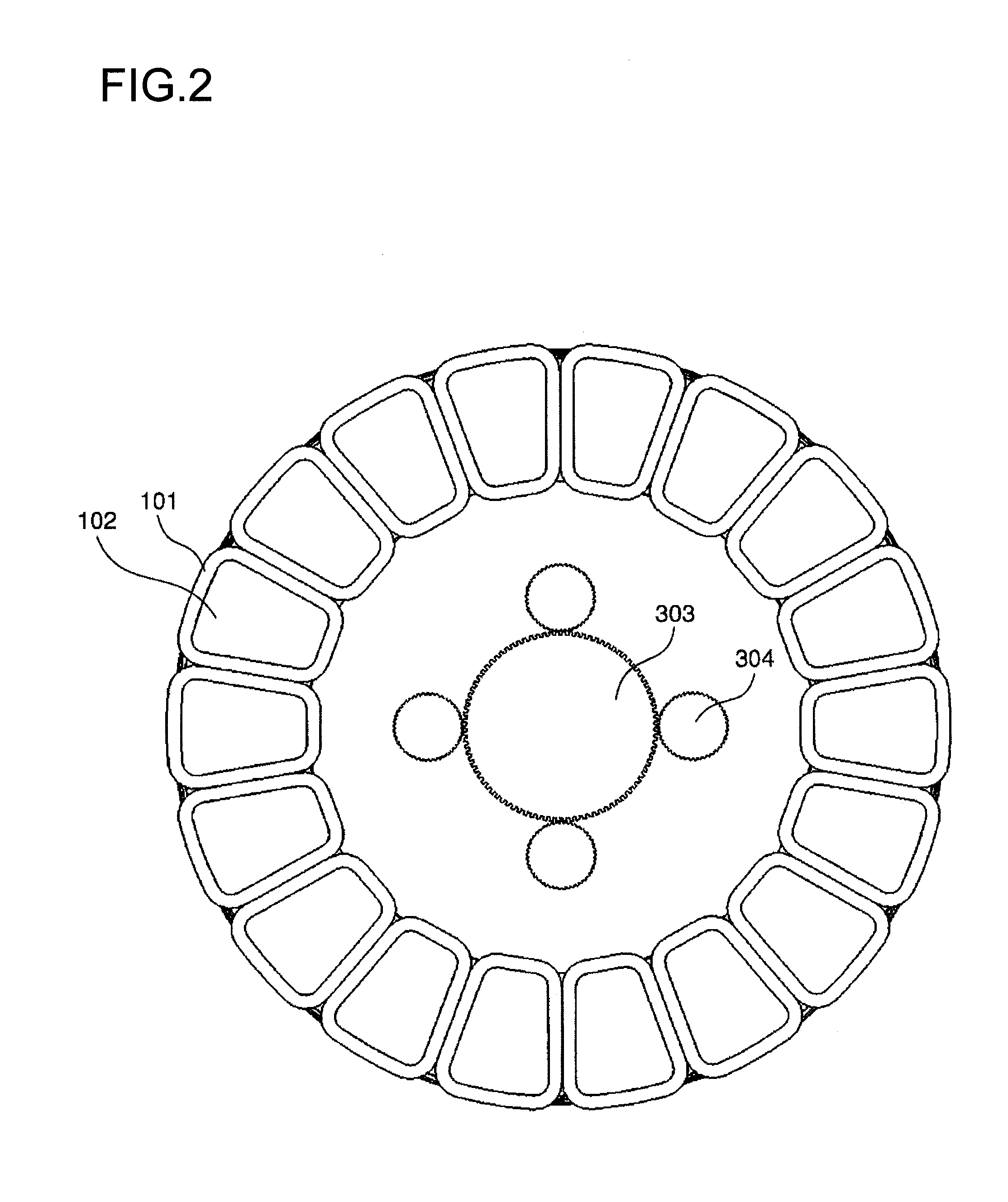Axial Flux Permanent Magnet Brushless Machine
- Summary
- Abstract
- Description
- Claims
- Application Information
AI Technical Summary
Benefits of technology
Problems solved by technology
Method used
Image
Examples
embodiment # 1
Embodiment #1
[0044]FIGS. 1 through 4 and 5A and 5B show the first embodiment of the axial gap type rotating electrical machine according to the present invention. FIGS. 1, 5A, and 5B are axial sectional views as seen from the radial direction, FIG. 2 is a diametrical sectional view as seen from the axial direction, FIG. 3 is a perspective view of FIG. 2, and FIG. 4 is a sectional view of the perspective view of FIG. 3. Here, the radial direction is a direction orthogonal to the rotational axis of the rotor, and the axial direction is the direction along the rotational axis of the rotor.
[0045]The rotating electrical machine, which means here an axial flux permanent magnet brushless machine or an axial gap type rotating electrical machine, according to the present invention includes a stator 100, two rotors 200, a variable gap mechanism 300, and a housing 500.
[0046]The stator 100 includes a plurality of coils 101 that are arranged in its circumferential direction around an axis A as a...
embodiment # 2
Embodiment #2
[0055]FIG. 6 is a figure showing the second embodiment of the axial gap type rotating electrical machine according to the present invention. In this embodiment, the upper and lower output shafts 204 of the axial gap type rotating machine shown in the first embodiment are connected via torque transmission mechanisms 402 to a single external output shaft 401 that rotates around an axis C exterior to the housing. The torque transmission mechanisms 402 may, for example, be bevel gears or belts or the like.
[0056]In this second embodiment, the output torques of the output shafts 204 that rotate around the axis A are transmitted via the torque transmission mechanisms 402 to the external output shaft 401 that rotates around the axis C.
[0057]By transmitting the output torques of the upper and lower output shafts 204 to a single shaft in this manner, it becomes possible to ensure that the rotation of the shafts 204 and also their torques agree with one another, even though the ou...
embodiment # 3
Embodiment #3
[0058]FIG. 7 is a figure showing the third embodiment of the axial gap type rotating electrical machine according to the present invention. It should be understood that, in FIG. 7, the housing 500 and the bearings 501 are omitted.
[0059]This embodiment is one in which the relative position in the rotational direction of the upper and lower rotors 200 of the axial gap type rotating electrical machine described in the first embodiment is fixed (while they are free to move relative to one another in the axial direction). This rotating electrical machine according to the third embodiment is provided with a rotor coupling mechanism 403 between the upper and lower rotors 200 for performing this relative rotational fixing. The rotor coupling mechanism 403 is a system for mechanically coupling the relative position of the upper and lower rotors 200 in the rotational direction, and may be, for example, a cylinder or the like. Moreover, one or more rotor coupling mechanisms 403 of...
PUM
 Login to View More
Login to View More Abstract
Description
Claims
Application Information
 Login to View More
Login to View More - R&D
- Intellectual Property
- Life Sciences
- Materials
- Tech Scout
- Unparalleled Data Quality
- Higher Quality Content
- 60% Fewer Hallucinations
Browse by: Latest US Patents, China's latest patents, Technical Efficacy Thesaurus, Application Domain, Technology Topic, Popular Technical Reports.
© 2025 PatSnap. All rights reserved.Legal|Privacy policy|Modern Slavery Act Transparency Statement|Sitemap|About US| Contact US: help@patsnap.com



